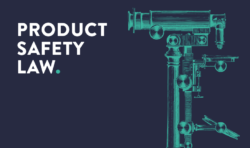Instructions are of central importance under product law: The instruction manual is an elementary component of the (formal and substantive) requirements for the marketability of products. In the Federal Republic of Germany, for example, Sec. 3 Para. 4 ProdSG requires that instructions for use be supplied in German if information is involved which is intended to ensure the protection of safety and health when using, supplementing or maintaining a product. This refers to an embodied form so that the paper form, but also, for example, a CD-ROM (which has meanwhile become obsolete again), easily meets the legal requirements. European product safety law applies accordingly. Then the instruction obligation counts to the essential traffic (security) obligations of the goods manufacturer in the producer liability law according to Sec. 823 Para. 1 BGB (accordingly the instruction error is located in Sec. 3 Para. 1 ProdHaftG). Any violation of the duty to instruct or instruction errors can, in the event of damage, lead to claims by the injured party for damages and, if applicable, compensation for pain and suffering (Sec. 823 Para. 1 BGB; Sec. 1 Para. 1 1st sentence ProdHaftG).
In practice, the design of instructions for use and operating instructions is as often based on the DIN EN 82079-1:2014-06 Preparation of instructions for use – Structure, content and presentation – Part 1: General principles and detailed requirements (IEC 82079-1:2012); German version EN 82079-1:2012, especially as it also partly provides a presumption of conformity (relevant to product safety law) in accordance with Sec. 5 Para. 2 ProdSG (so-called national New Approach) (cf. the announcement in Joint Ministerial Gazette No. 35 of 6 September 2019, p. 685). With the IEEE/IEC International Standard for Preparation of information for use (instructions for use) of products – Part 1: Principles and general requirements, Edition 2 of the central technical standard for technical writers was recently published (a German version of the technical standard does not yet exist, but it is already in progress). The content of IEC 82079-1:2012 has been comprehensively revised.
The following innovations are particularly noteworthy:
- Information for use (of products) is more than just the instruction manual.
- Information/content concept required to develop information architecture
- Courage to minimalism through revised principles (quality criteria)
- The target group and application must be taken into account when selecting the medium and must therefore be product-specific.
- Information management processes will have an impact on the role of technical writers, also because higher competences are required.
Result: Standardization is proving to be more dynamic than law when it comes to the digitization of instruction handbooks: While law is still strongly influenced by the requirement of embodied instruction handbooks, whereby even paper form is often still required (especially by the European Commission), the new IEEE 82079-1:2019 already points the way towards a multimedia or digital approach. It remains to be seen to what extent and, if so, when the law will understand the almost undeniable development towards digital forms of information transmission.
For further information: Schucht, NJW 2016, 3681 ff.
Do you have any questions about this news or would you like to discuss the news with the author? Please contact: Dr. Carsten Schucht







